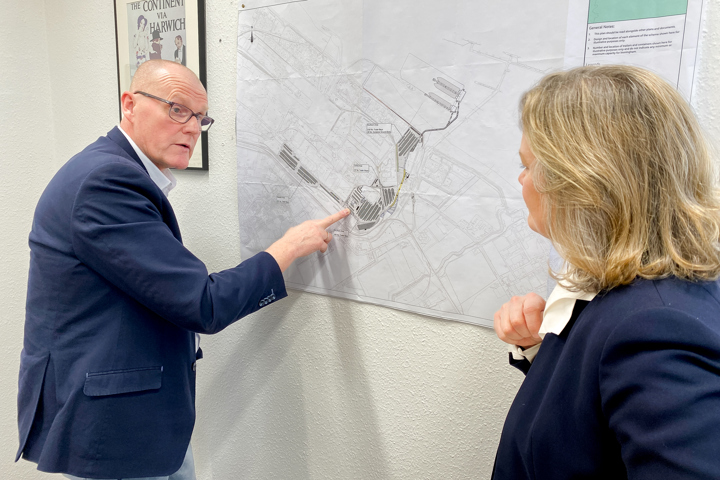
Stena Line Immingham future-proofing the ports
23 March 2023
With a £100m investment and a 50-year lease, Stena Line Immingham’s latest project is playing a major role for the region. By building a new terminal at the Port of Immingham, Stena Line will not only create opportunities for its own business, but for many businesses present in the port and its surroundings. The Link visited Stena Line’s premises to speak with Marcel van der Vlugt, Project Manager at Stena Line Immingham, about the impressive plans and their impact on the Humber.
"The new Immingham river terminal will bring a substantial boost to the region’s economy in terms of jobs and revenue,” says Marcel van der Vlugt, Senior Manager Port Development - BR North Sea, as the Link meets him at the Stena Line office at the Port of Immingham.
“As freight volumes continue to increase, we also need to increase terminal capacity. This is the next step in a long-term strategic vision for our routes between the UK and Continental Europe.”
The addition of a new river terminal will not only allow for more vessels to enter the port; its placement will make it accessible to vessels that currently aren’t able to enter the port due to their size.
“The new river terminal will make it possible to deploy larger vessels on the route between Immingham and Rotterdam. Consequentially, we will be able to meet the important business needs of our customers and potentially grow our route network in the future.“
Changing demands
Stena Line first started its operations in the Humber in 2000, with a service running between Killingholme and the Hook of Holland. 14 years later, the company added a second service, running between Killingholme and Rotterdam, which was moved to the Port of Immingham in 2022.
“This region is extremely important for Stena Line, and it has a lot of potential for the future,” Marcel says and explains: “The Humber South Bank is ideally situated to link the port into the UK motorway network; most major conurbations can be reached with 3-4 hours by truck, allowing drivers to roundtrip back to the area on a daily basis.“
According to Marcel, the demand for Stena Line’s services has increased significantly in the last decade, with unaccompanied freight growing the fastest in numbers.
“Between 2010 and 2021, the total shortsea demand on the Humber Ports increased by 38.9%. Unaccompanied Ro-Ro freight is by far the most important category, accounting for 57.7% of the Humber shortsea import volumes. It’s apparent that the Humber area represents a vital national gateway for the Ro-Ro sector.”
He believes that the pandemic played a certain role in the development, as it made businesses rethink the way they operate.
“During the pandemic, many manufacturers and traders were reassessing their supply chains which, in many cases, lead to increased inventory, and, as a consequence, less demand for accompanied units and increased demand for unaccompanied.”
This change in demand equally affected the regions and routes used for freight. “In the logistics industry, the upshot has seen volumes switch from the short straits such as Calais/Dover, which is heavily concentrating on driver accompanied freight.”
Investing in Immingham
Marcel is confident that the trend will continue, and that the ports of the Humber will continue to play a key role for the UK shipping industry. He believes that the £100m deal, and the 50 year-lease signed between Stena Line and Associated British Ports, ABP, sends an signal about the company’s intention to invest in the region.
“The length of the agreement is important as it sends a message to our current and future customers, showing that we are a trusted partner and that we are here to stay. In turn, this enables them to develop their own logistics solutions locally, including warehousing, distribution and so on.”
In order to progress the project, a Development Consent Order (DCO) has to be obtained through the Planning Inspectorate and once signed off by The Secretary of State for Transport, the team will start working full speed with completing the terminal on time. Once up and running, the workforce is expected to grow significantly, adding up to 100 people.
“The main focus of our efforts until mid-2025 will be to deliver and set up the new river terminal, along with its landside operations. These will be located within the port, and operated by Stena Line staff, as we want to make sure that our customers continue to receive the level of service they have come to expect on a Stena Line route.”
Join our mailing list
and keep up-to-date with the Chamber's news and events.
Read our Privacy Policy here